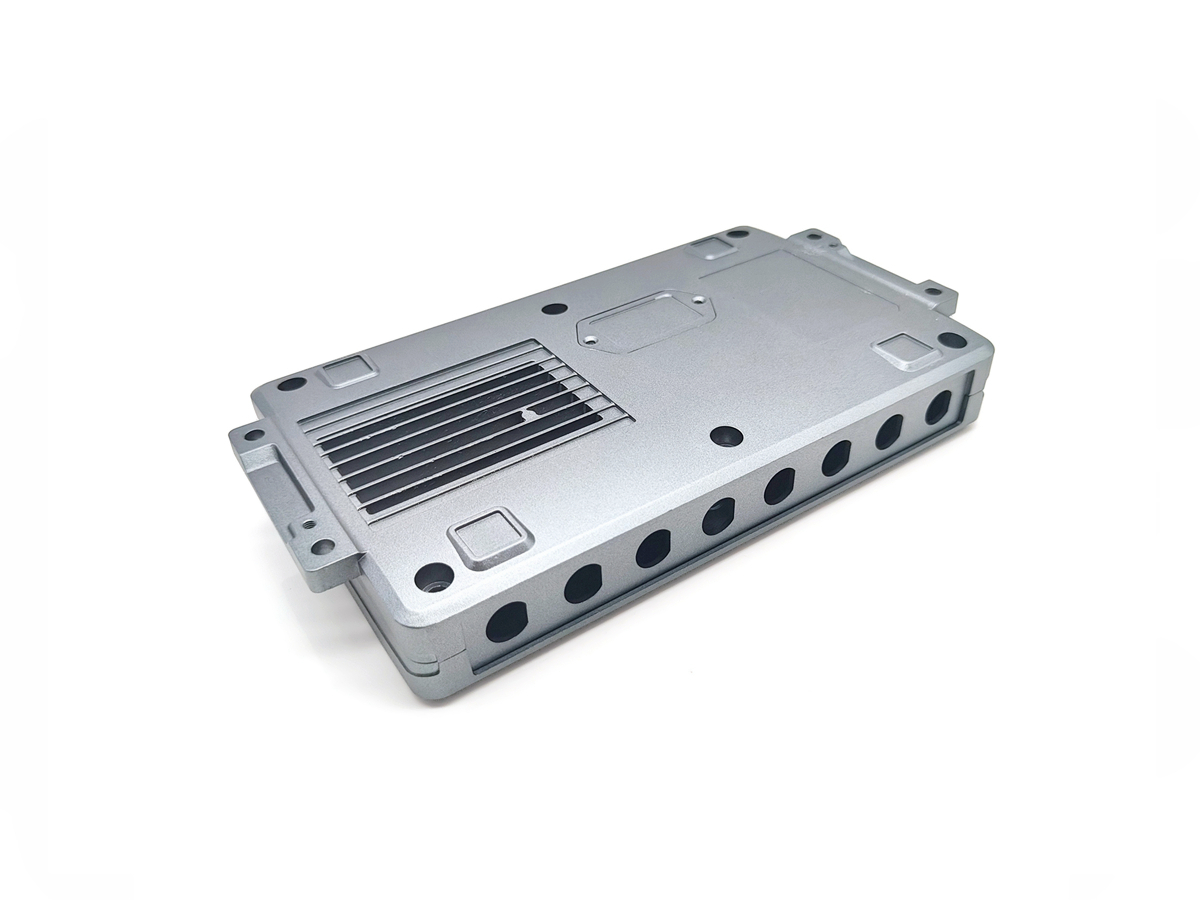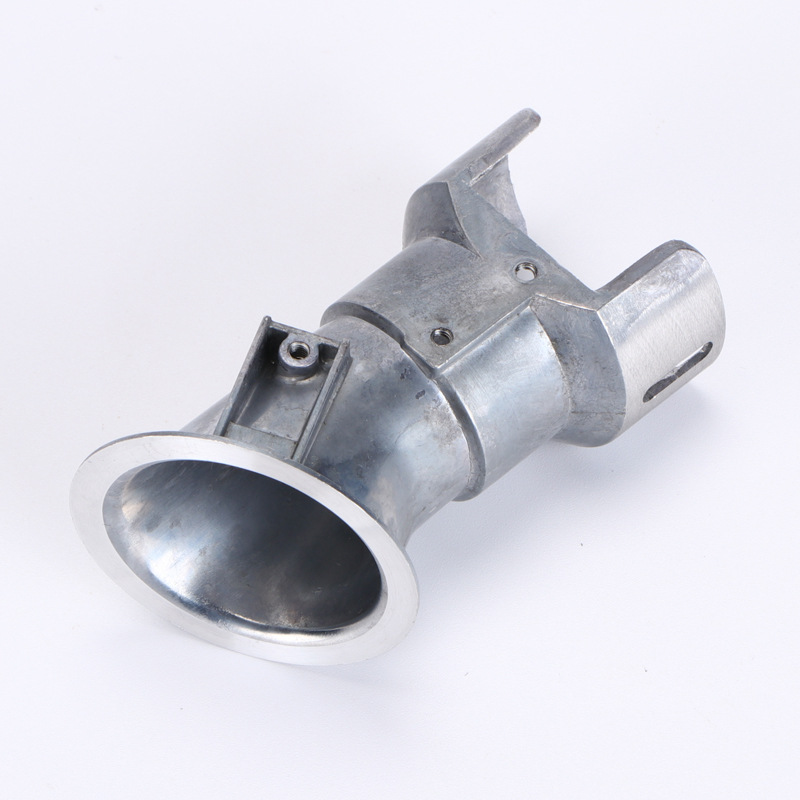A380
A380 aluminum alloy is the most commonly specified material for high-pressure die casting due to its exceptional mechanical strength, dimensional stability, corrosion resistance, and excellent castability. It is especially suited for complex geometries and thin-walled components in high-volume production environments.
At Neway, we offer precision manufacturing with A380 aluminum alloy, integrating tool and die making, CNC post-machining, and surface finishing to deliver dimensionally accurate, high-performance components for demanding applications.
Key Characteristics of A380 Aluminum Alloy
A380 is designated under ASTM B85 and is widely used due to its ideal balance of castability, strength, thermal conductivity, and corrosion resistance.
Property | Value |
|---|---|
Density | 2.71 g/cm³ |
Ultimate Tensile Strength | 324 MPa (47,000 psi) |
Yield Strength | 159 MPa (23,000 psi) |
Elongation at Break | 3.5% |
Modulus of Elasticity | 71 GPa |
Thermal Conductivity | 96 W/m·K |
Electrical Conductivity | 32% IACS |
Coefficient of Thermal Expansion | 21.8 µm/m·°C |
Brinell Hardness | ~80 HB |
Fluidity Index | Excellent |
Pressure Tightness | High |
The alloy’s silicon (Si) content provides excellent fluidity and wear resistance, while copper (Cu) enhances strength and thermal fatigue performance. These attributes make A380 especially effective for producing components subjected to cyclic thermal or mechanical loads.
Chemical Composition of A380
Element | Percentage (%) |
|---|---|
Silicon (Si) | 7.5 – 9.5 |
Copper (Cu) | 3.0 – 4.0 |
Iron (Fe) | ≤ 1.3 |
Zinc (Zn) | ≤ 3.0 |
Magnesium (Mg) | ≤ 0.10 |
Manganese (Mn) | ≤ 0.50 |
Nickel (Ni) | ≤ 0.50 |
Tin (Sn) | ≤ 0.35 |
Others | ≤ 0.50 (total) |
Aluminum (Al) | Balance |
This composition profile ensures superior castability and minimal shrinkage, producing consistent parts with tight dimensional tolerances and thin-walled features.
Mechanical Properties of A380 Aluminum Alloy
A380 demonstrates a well-balanced mechanical profile ideal for structural and load-bearing applications, especially under moderate thermal cycling. The following are typical mechanical properties as per ASTM B85:
Property | Value (as-cast) |
|---|---|
Ultimate Tensile Strength | 324 MPa (47,000 psi) |
Yield Strength (0.2% offset) | 159 MPa (23,000 psi) |
Elongation at Break | 3.5% |
Fatigue Strength (10⁸ cycles) | ~124 MPa (18,000 psi) |
Modulus of Elasticity | 71 GPa |
Impact Strength (Izod, unnotched) | ~6 J (ASTM D256) |
Brinell Hardness | 80 HB |
Post-machining or heat treatment on specific surfaces can further improve these values. However, the alloy is typically used in its as-cast form due to economic and dimensional stability benefits. Fatigue resistance and strength-to-weight ratio make it an optimal choice for structural and enclosure applications.
Benefits of Using A380 in Die Casting
High Mold Fill Capability: Ideal for producing parts with intricate geometries, undercuts, and thin walls (≤1.5 mm wall thickness achievable).
Dimensional Accuracy: Supports tight tolerances per NADCA Product Specification Standards (±0.05 mm achievable).
Thermal Stability: Operates reliably in environments up to 200°C without mechanical degradation.
Corrosion Resistance: Enhanced via secondary treatments such as anodizing and powder coating.
Post-Processing Compatibility: Excellent response to machining, finishing, and coating operations without residual stress cracking.
Typical Applications of A380 Die Cast Parts
A380 meets the technical requirements for high-volume, structurally sensitive, and weight-restricted applications. Common sectors include:
Automotive: Engine mounts, transmission housings, valve bodies, structural brackets
Telecom: RF enclosures, backplanes, outdoor communication modules
Consumer Electronics: LED housings, mobile device frames, computer enclosures
Industrial Equipment: Pump bodies, hydraulic covers, actuator bases
Lighting Systems: Modular lamp frames, heat-dissipative LED structures
Its ability to consolidate functions into single parts also supports cost reduction and component integration strategies in OEM supply chains.
CNC Machining Considerations for A380
While A380 offers near-net-shape casting, precision CNC machining is essential for critical features such as flat sealing faces, bearing bores, or threaded inserts.
Machining guidance:
Tooling: Use uncoated or TiAlN-coated carbide cutters to withstand the alloy’s abrasive silicon particles.
Cutting Speeds: 200–500 m/min for milling, 80–180 m/min for drilling (depending on tool geometry).
Feed Rates: 0.05–0.2 mm/rev; optimized per feature depth and chip removal volume.
Coolants: Emulsified coolant with high flow rate is recommended to dissipate heat and prevent built-up edge.
Fixtures: Use custom jigs to minimize vibration and distortion for thin-walled castings.
Achievable finishes include Ra ≤ 1.6 µm, suitable for sealing surfaces or pre-coating conditions.
Surface Treatments for A380 Parts
Post-casting surface finishes are essential for enhancing corrosion resistance, wear resistance, or cosmetic appearance:
Anodizing: Improves oxide layer durability; Type II (decorative) and Type III (hardcoat) both compatible.
Powder Coating: Suitable for automotive and consumer products with over 1000-hour salt spray resistance.
Tumbling: Removes flash and sharp edges before coating or mechanical assembly.
Painting: Custom color solutions and UV-resistant coatings for branded enclosures.
All surface processes are validated with pull-off adhesion, salt spray, or film thickness testing per ASTM B117 and ISO 2409.
Why Choose Neway for A380 Die Casting?
Neway supports customers from concept through tooling design, rapid prototyping, and mass production with full material traceability, mold flow simulation, and SPC-based quality control. We optimize part geometry and gate design to reduce defects and ensure repeatability across large production runs.
FAQs (no answers needed):
What is the difference between A380 and A360 aluminum alloys?
Can A380 parts be anodized or powder coated?
What tolerance levels are achievable when CNC machining A380 castings?
Is A380 suitable for high-thermal conductivity applications?
How does A380 compare to other aluminum die casting alloys in terms of cost and performance?


